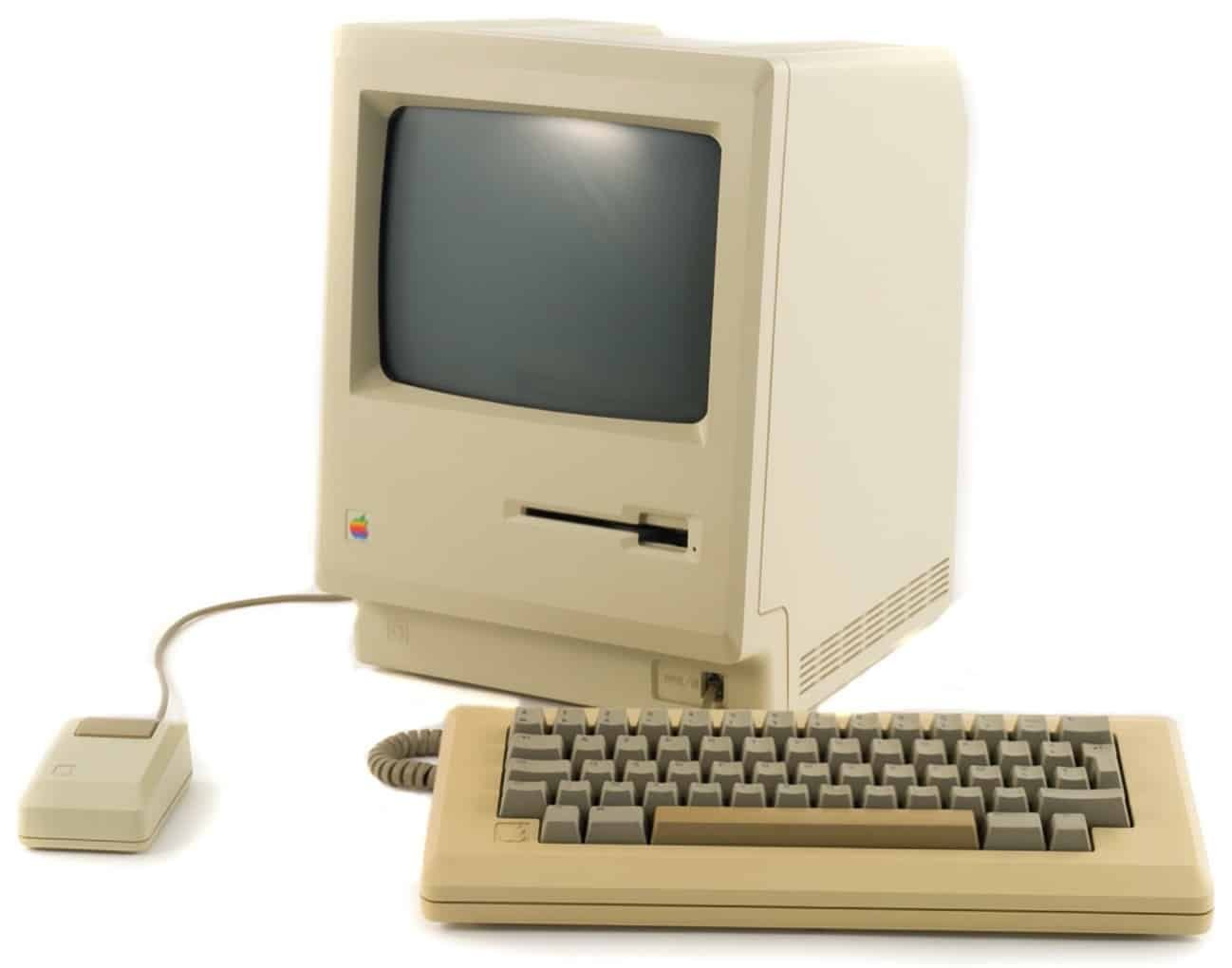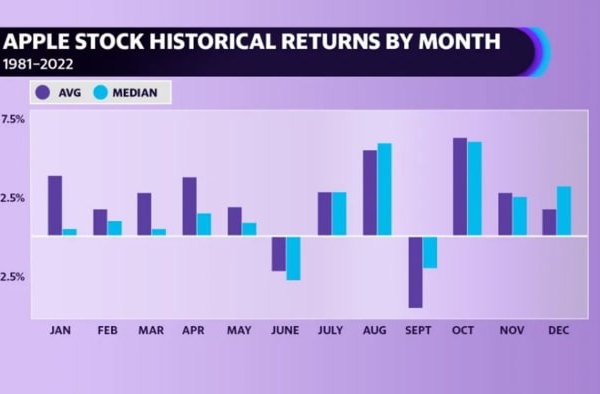
The Macintosh 512Ke, launched on April 14, 1986, marked a significant moment in the evolution of personal computing. As a low-cost Macintosh alternative, it sought to address early customers’ complaints regarding memory limitations in previous models, enhancing functionality with upgraded Mac 512Ke specs. Featuring an 8MHz processor and an 800KB floppy drive, the Macintosh 512Ke was both appealing and accessible, priced at $1,999, compared to its contemporaries. This model introduced a more user-friendly experience for budding tech enthusiasts while remaining true to Apple’s vision for simplicity—though with an added touch of confusion in naming conventions. Furthermore, the Macintosh 512Ke price ensured that individuals and educational institutions could gain entry into the Mac ecosystem without breaking the bank, solidifying its place in Apple Macintosh history.
The Mac 512Ke represents an important milestone in the landscape of budget-friendly personal computers. This model is often revered for its simplistic yet functional features, presenting a compelling option for users seeking a reliable introductory device in the world of Macintosh. Similar to its predecessors, the Mac 512Ke left a lasting impact on the market with its distinctive design and foundational software capabilities. Many recognize this model as a gateway into the broader realm of Apple computing, symbolizing a pivotal shift toward accessible technology. As part of the Macintosh family, it continues to evoke nostalgia among tech enthusiasts who appreciate its role in shaping early computing experiences.
Understanding the Macintosh 512Ke Specs
The Macintosh 512Ke, introduced in 1986, boasted several upgraded specifications aimed at enhancing its performance and user experience. With an 8MHz Motorola 68000 processor at its core, the 512Ke maintained the processing capability of its predecessor while offering increased memory, featuring 512KB of RAM. This boost was particularly significant for users who found the original Macintosh 128K insufficient for their computing needs. Additionally, the 800KB double-density floppy drive provided users with a means to store and transfer more data compared to earlier models. These specifications made the Mac 512Ke a clear step up in performance, especially for users in education and small business environments looking for a more economical option in the Macintosh line-up.
In terms of software, the Macintosh 512Ke originally shipped with Mac OS System 3.0, which could be upgraded to System 6.0.8, ensuring users could benefit from the latest features and improvements that Apple offered during that era. Despite lacking a hard drive, which its competitor, the Macintosh Plus, had, the 512Ke was still a practical choice for users who valued affordability, making it especially appealing to budget-conscious buyers seeking a functional computing solution.
The enhancement of the Macintosh 512Ke specs also reflected Apple’s shift towards creating more specialized computer systems that could cater to various user needs. While maintaining a simple design that favored usability, the 512Ke was an early example of Apple’s attempt to balance performance with cost-effectiveness. This model’s double-density floppy drive was a significant feature, as it allowed for better data management and utilization, key factors for libraries, schools, and other institutions adopting Apple technology at the time. Users benefited from the relatively low-cost Macintosh with impressive specs, which helped pave the way for further innovations within the Macintosh family in subsequent years.
The Price Impact of the Macintosh 512Ke
When the Macintosh 512Ke hit the market with a price tag of $1,999 in 1986, it was seen as a more affordable alternative to the Macintosh Plus, which was priced at $2,599. Although still deemed expensive by modern standards, in 1986, this price made the 512Ke an attractive option for consumers needing a capable computer without the hefty cost of higher-end models. In today’s currency, $1,999 translates to roughly $5,800, highlighting that while the 512Ke was marketed as a ‘low-cost’ Mac, it still represented a significant investment for many households or small businesses during that time.
Moreover, Apple’s pricing strategy also allowed users the option to trade in their Macintosh 512Ke for a Macintosh Plus for an additional $799. This trade-in option created a somewhat convoluted scenario for buyers; consumers could end up paying more through this swap than if they had purchased the Mac Plus directly. Such pricing strategies reflected Apple’s approach to market segmentation, aiming to capture both budget-conscious consumers and those desiring cutting-edge technology.
To put the pricing of the Macintosh 512Ke into perspective, it is important to consider the context of the mid-1980s computer market. Personal computers were not yet ubiquitous, and many families were just beginning to see the value of owning such technology. The price of the 512Ke positioned it well within the reach of educational institutions, which were increasingly integrating computer systems into their curricula. Despite being labeled as “low-cost,” the 512Ke still required careful consideration from potential buyers weighing their options against the features offered by competitors. The price point ultimately helped solidify the Macintosh brand’s reputation for quality and innovation, drawing in users who would become loyal to Apple in future years.
Exploring the Features of the Macintosh 512Ke
The Macintosh 512Ke introduced several notable features that enhanced its functionality and user experience. Primarily, users appreciated its all-in-one design, which housed the computer components neatly within a beige case, along with a 9-inch monochrome display. This compact design was ideal for small office setups and educational environments, where space was often a premium. Additionally, the inclusion of an 800KB double-density floppy drive represented a significant improvement, allowing users to store and transfer larger files more efficiently, which was crucial for productivity in various applications, from school projects to business presentations.
Moreover, the 512Ke also included 128KB of ROM, which provided improved performance for applications that required more memory. This feature was particularly important given the limitations of earlier models, which struggled with multitasking and more demanding software. The lasting legacy of the Macintosh 512Ke can be seen in how it laid the groundwork for future Macs that would eventually come with even greater capabilities, while still adhering to Apple’s vision of simplicity and ease of use.
Despite lacking a hard drive, the Macintosh 512Ke was also one of the first models capable of functioning as an AppleShare server, setting a precedent for networked computing within small businesses and schools. This ability to connect and share resources with other Macs greatly expanded the utility of the 512Ke beyond mere standalone computing. As smaller networks became increasingly common in office and educational settings, the 512Ke facilitated collaboration and file sharing, demonstrating its versatility as not just a personal computer but also an essential tool for modern productivity. As a result, even with its limitations, the features of the Macintosh 512Ke offered significant benefits to users at a time when computer technology was rapidly evolving.
A Brief History of the Macintosh 512Ke
The Macintosh 512Ke, launched in April 1986, represented a pivotal moment in Apple’s history, as it signaled the company’s efforts to broaden its appeal to budget-conscious consumers. Positioned as a lower-cost alternative to the Macintosh Plus, which had been released shortly before, the 512Ke emerged during a unique period when personal computers were just beginning to gain traction in the consumer market. This model was one of several iterations of the Mac line that Apple produced in quick succession, showcasing their commitment to innovation and responsiveness to consumer feedback regarding memory limitations and pricing concerns of earlier models.
This historical context is critical in understanding the evolution of Apple’s product line during the 1980s. Although stripped of some features found in the higher-end models, the 512Ke’s enhancements over the original Macintosh 512K were significant in shaping its identity as a functional yet economical choice for users. The introduction of this model not only reflected Apple’s strategy to compete with IBM-compatible PCs, but also laid the groundwork for the Macintosh brand’s long-term legacy, influencing future developments in personal computing.
However, the journey of the Macintosh 512Ke was not without its challenges. Despite its favorable price point, Apple faced criticism regarding its marketing strategies, which often led to confusion among consumers about the differences between various models. Additionally, Apple’s decision to market the 512Ke under different names for various sectors, such as the Macintosh ED for education, compounded this confusion, prompting calls from some consumers for clearer branding. The discontinuation of the Macintosh 512Ke in September 1987 only a year and a half after its launch illustrated the rapid pace of change in the tech industry during this period and Apple’s ongoing struggle to maintain clarity in its product lines while staying competitive.
Macintosh 512Ke: Unpacking the Confusion in Naming
The naming conventions used by Apple during the Macintosh 512Ke’s release have often puzzled consumers and collectors alike. As with many Apple products, the Macintosh 512Ke had multiple designations, with it being marketed as the Mac 512K/800 in some retail channels and as the Macintosh ED in educational settings. This practice, while intended to appeal to various segments of the market, often resulted in confusion regarding the distinctions between models and the specs they offered. The lack of a consistent naming convention within the same product category contributed to an already convoluted product line that Apple had begun constructing in the early days of the Macintosh.
This phenomenon of varied naming conventions exemplified the challenges Apple faced in deploying effective branding strategies while navigating a rapidly evolving computing landscape. For consumers seeking clarity, it often meant additional research to understand the differences between similar models. While the Macintosh 512Ke was initially designed to target a budget-conscious audience, its alternative naming and positioning could lead to mixed perceptions about its value compared with its more premium counterparts, such as the Macintosh Plus. Through this confusion, however, the 512Ke ultimately established itself as a key player in Apple’s lineup before being phased out.
The significance of the naming situation reflects broader trends within Apple’s marketing strategies over the years. Despite the potential drawbacks of their naming conventions, they undoubtedly sparked interest among tech enthusiasts and collectors, often leading to discussions and debates around the historical nuances of Apple’s product naming, particularly with the Macintosh series. As Apple continued to innovate, the challenges posed by their naming decisions highlighted the complexity of branding in the technology sector.
The Aesthetic Changes of the Macintosh 512Ke
In 1987, Apple implemented aesthetic updates to the Macintosh 512Ke, transitioning it into the Platinum color scheme that first appeared with the Macintosh Plus. This change not only modernized the 512Ke’s appearance but also created a unified look across the Macintosh line, helping to visually differentiate it from the earlier models. Though the internal components remained the same, the updated bezel gave the 512Ke a fresh, contemporary look that appealed to consumers seeking a modern computing aesthetic. This design choice reflected Apple’s ongoing efforts to enhance not only performance but also the overall user experience through visually appealing products.
While the physical design updates were notable, they also sparked discussions among collectors and enthusiasts regarding the importance of aesthetic value in technology. The shift to a Platinum color scheme was emblematic of the changing preferences in consumer electronics, where a sleek design was increasingly becoming just as significant as technical specifications. This visual evolution mirrored larger trends in the tech industry, where aesthetics began to play an essential role in marketing and user engagement.
The 512Ke’s aesthetic changes also encouraged collectors to consider the models they were acquiring based on visual appeal rather than just specifications. With Apple’s rapid iteration cycles in the 1980s, such updates indicated not only shifts in consumer tastes but also Apple’s strategy for maintaining relevance in a competitive tech market. As the company moved forward, the color scheme and design of Macs would continue to evolve, ultimately laying the foundation for future product lines that would gain iconic status in the tech community.
Legacy of the Macintosh 512Ke in Apple History
The Macintosh 512Ke, while a short-lived model in Apple’s history, left a lasting legacy that transcended its operational life. As one of the first models released during a critical growth phase for personal computing, the 512Ke contributed to shaping public perception of Apple as a pioneer in user-friendly technology. With its introduction of low-cost computing options for users, the 512Ke helped solidify Apple’s reputation as a brand committed to accessibility, while also showcasing a delicate balance between price and performance. Through its unique features and specifications, the 512Ke appealed to a diverse range of consumers in an era when personal computing was becoming essential for productivity in educational and professional settings.
Moreover, the Macintosh 512Ke’s historical significance lies in its profound impact on Apple’s future product strategies. The model’s design choices and naming conventions offered critical lessons for Apple in navigating complex market dynamics. Apple’s evolution post-512Ke would ultimately lead to a more streamlined product line and clearer branding efforts, aimed at simplifying consumer choices in subsequent models. As such, the legacy of the Macintosh 512Ke can be felt in later generations of Apple products, serving as a reminder of both the challenges and triumphs faced by the company during its formative years.
Despite being discontinued shortly after its release, the Macintosh 512Ke remains an important part of Apple’s history, especially for enthusiasts and collectors. It embodies the spirit of innovation and customer-focused design that characterized Apple in the 1980s, and its role as a stepping stone toward more advanced Macintosh models underscores the importance of iterative development in technology. Today, the Macintosh 512Ke is fondly remembered not only for its specs and features but also for the nostalgic connection it has forged with early Apple users, demonstrating the model’s enduring place in the narrative of personal computing.
Frequently Asked Questions
What are the key specifications of the Macintosh 512Ke?
The Macintosh 512Ke features an 8MHz Motorola 68000 processor, 512KB of RAM, and a double-density 800KB floppy drive. It initially shipped with Mac OS System 3.0 and could be upgraded to System 6.0.8.
How does the Macintosh 512Ke compare in price to the Macintosh Plus?
At launch, the Macintosh 512Ke was priced at $1,999, making it a more affordable option compared to the Macintosh Plus, which retailed for $2,599. Adjusted for inflation, the 512Ke costs about $5,800 in 2025.
What features make the Macintosh 512Ke a ‘low-cost’ Macintosh?
The Macintosh 512Ke is termed a ‘low-cost’ Macintosh due to its more accessible pricing and the removal of memory expansion slots, catering to users who needed a basic Mac experience without the high-end specs of models like the Macintosh Plus.
What were the enhancements made in the Macintosh 512Ke compared to its predecessor?
The Macintosh 512Ke introduced improvements like 128KB more ROM and a double-density floppy drive, which enhanced its functionality and addressed user complaints regarding the memory limitations of the original Macintosh 512K.
Why did the Macintosh 512Ke not support memory expansion?
The Macintosh 512Ke adhered to Steve Jobs’ vision that Macs should be non-expandable, contrary to the shift seen in higher-end models like the Macintosh Plus that allowed memory upgrades.
Was the Macintosh 512Ke available for educational institutions?
Yes, the Macintosh 512Ke was marketed to education sectors as the Macintosh ED, which included a Mac Plus extended keyboard, catering to the unique needs of students and educators.
What was the design update that the Macintosh 512Ke received in 1987?
In 1987, the Macintosh 512Ke received an aesthetic update to the Platinum color scheme, which aligned its appearance with the Macintosh Plus, although its internal specifications were unchanged.
Why is the Macintosh 512Ke significant in Apple history?
As the fourth model in the Macintosh lineup, the 512Ke represents Apple’s efforts to provide a lower-cost option while still incorporating key features and functionalities that appealed to a wider audience.
What operating system did the Macintosh 512Ke ship with?
The Macintosh 512Ke originally shipped with Mac OS System 3.0, but users could upgrade to System 6.0.8 for enhanced functionality and performance.
When was the Macintosh 512Ke discontinued?
Apple discontinued the Macintosh 512Ke in September 1987 after producing it for a little over a year.
| Key Features | Details |
|---|---|
| Release Date | April 14, 1986 |
| Model | Macintosh 512Ke |
| Processor | 8MHz 68000 |
| RAM | 512k |
| Floppy Drive | 800KB double-density |
| Release Price | $1,999 (equivalent to $5,800 in 2025) |
| Aesthetic Updates | Adopted Platinum color scheme in 1987 |
| Market confusion | Marketed as both Macintosh 512Ke and Macintosh ED for education sector |
| Discontinuation Date | September 1987 |
Summary
The Macintosh 512Ke, released on April 14, 1986, was a low-cost alternative in the Mac lineup, introducing key hardware upgrades while also creating some market confusion. As one of the first Macs designed with an emphasis on affordability, it offered features like an 8MHz processor and a double-density floppy drive but lacked memory expansion options. Although Apple marketed it under various names, including the Macintosh ED for educational institutions, the Mac 512Ke ultimately retained a straightforward identity while being subtly updated in aesthetics over its short life. The Macintosh 512Ke is a significant entry in Apple’s history, bridging accessibility and functionality.
You may also like

iOS App Store Success: A Milestone in Digital Distribution


First Email from Space: The Macintosh Portable’s Legacy
Archives
Calendar
| M | T | W | T | F | S | S |
|---|---|---|---|---|---|---|
| 1 | 2 | 3 | 4 | |||
| 5 | 6 | 7 | 8 | 9 | 10 | 11 |
| 12 | 13 | 14 | 15 | 16 | 17 | 18 |
| 19 | 20 | 21 | 22 | 23 | 24 | 25 |
| 26 | 27 | 28 | 29 | 30 | 31 | |